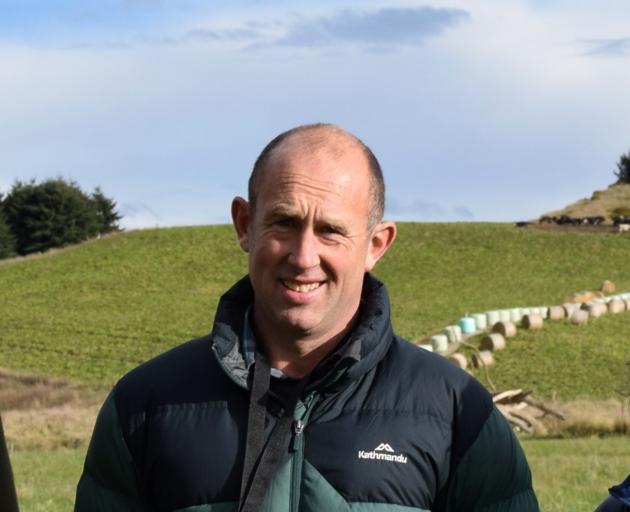The latest New Zealand Drought Index shows southeast Otago and inland Otago are experiencing extremely dry conditions. Shawn McAvinue asked farmers early last week how dry it is at their workplace. PHOTOS: ALLIED PRESS FILES

"We had 10mm of rainfall in January. We average about 750mm a year and it’s usually reasonably well spread. Things stopped growing about January 10 and we’ve been getting by on the feed we built up over the spring. We had a good growthy spring. If you took the snow out in October it would be the near-perfect spring. So the lead-in has been good, stock condition has been good with plenty of feed and people have made a lot of supplement and we haven’t had a lot of wind so that’s been great but Christmas arrived and the sun came out and things got real hot and it stayed real hot and we’ve got no rain. Through lower Hillend, Te Houka through to Clinton, south through Waiteka and Warepa, all those areas are terribly dry. Having said that, we got 1mm of rain the other day and Lovells Flat got 19mm and that makes a big difference."

"We are extremely bloody baked — it’s so dry. She’s pretty tough going to be honest. We are off-loading as much as we can — store lambs and cull ewes, anything that’s not going to be an asset in the long run. We had to buy in a lot of feed. We haven’t had to start feeding out yet but it won’t be long I reckon. We haven’t had a good season for four or five years now. We had a poor winter — we’re not getting the same amount of snow — and snow has been pretty useful for us. Spring is coming later and it’s staying colder for longer and we’re not getting the same growth, so when there is growth we’ve got a shorter window to make it happen but that’s farming for you — there’s always some challenge."

"It’s dry now — October and November were quite wet and December and January have been a bit more typical dry North Otago. We have irrigation so it doesn’t impact us too much — I’ve seen worse."

"It’s certainly dry — we have some coastal fog this morning which gives us a tiny bit of moisture. There’s times where you might get a 10mm shower or less but then it gets hot or windy directly afterwards and it disappears. We are trying to get rid of stock and it’s hard to do that and that’s the most challenging thing right now — we’ve still got more lambs on than we’d like to have."

"December was drier than average and we’re sitting at about 30mm of rainfall for January, about half of our normal average and our soils haven’t recovered from our previous two droughts we’ve had so our soil moisture levels are well below where they’d normally be. Paddocks are still green but the recovery is not there at all and we’ll probably move lambs a wee bit sooner. We need 25mm to keep us green and keep people’s spirits up but it will take a substantial rainfall to get things growing."

"We are not as dry as we were this time last year — we’ve got a bit more cover around this year. We wouldn’t say no to a drink but we are not desperate by any means — we have good reserves and plenty of baleage. The winter crops look good but they’d love a drink."

"It’s drier. We still have a full irrigation quota but I don’t know if that’s going to last that much longer. Last year was a pretty wet season so this season is more tending towards more of a normal Central Otago dry as there hasn’t been any significant rain in the last month. We’ve been killing steers and we’ve got down to the last 70
— the base numbers in terms of what we can potentially carry through a summer dry. We are not in any kind of drought mode at the moment in terms of feeding out or hitting summer crop but as soon as the irrigation gets cut, we’ll be moving into that mode."

"There are parts of the Maniototo which have been significantly impacted by the low level of rainfall and the intense heat over January but there are areas through Gimmerburn which have experienced exceptional rainfall but they are still dry because of the intense heat. I’d like to acknowledge the extreme damage the high level of rainfall has caused across parts of the North Island — it’s horrific — and that’s having a bigger impact than any of the dry conditions down here but that’s not to say we are in an unfolding situation but at the moment ... , we are under a patch of continuous thunderstorms, which are keeping us ticking along quite nicely."

"We are at the brink of something and we really need rain — we are at a stage where it’s make or break."














